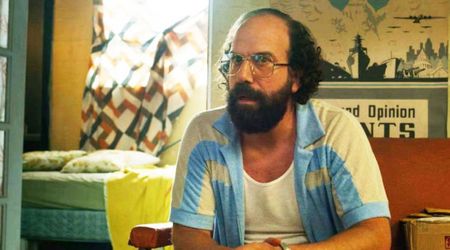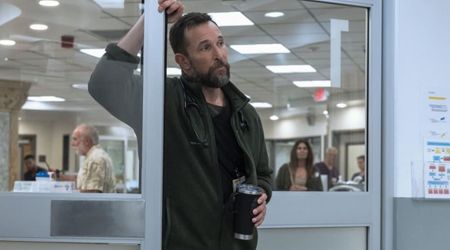'Enslaved' Episode 6 Review: Finale most joyful chapter of docuseries as it looks at abolition of slavery

'Enslaved', Epix's six-part docuseries, is possibly the most elaborate deep dive into the world history around slavery on recent American television. Its finale episode is also its most joyful chapter since it looks at the abolition of slavery and how the 400-year-old 'business' of kidnapping and enslaving human beings from Africa finally ground to a halt.
Besides looking at the battle of words and ideas around abolition that began years before England became the first nation to abolish slave trade, the episode also looks at key moments and people around the American Civil War. Like any big change, the beginning of the end of slavery began with changing popular opinion among men and women in European nations and in America. Thomas Clarkson, the leading campaigner against the slave trade in the British Empire carried an "African chest" from town to town to change hearts and minds. In his chest, there were 'positive' artifacts of African culture from woven fabrics, ornaments and other items that showed that Africans were not chattel or animal-like but living breathing human beings. There were also 'negative' artifacts that showcased some of the terrible torture implements used on Africans to make them submit to slavery.
Most common people in England had no idea about the barbarism involved in the slave trade and soon 'common people' petitions signed by thousands of men and women began making their way to Parliament to abolish slavery. This was aided by the invention of the printing press where engravings of the terrible acts of violence found wide circulation and turned the tide of public opinion against slavery.

One such incident where Captain John Kimber killed a teenage African slave on his ship was heavily publicized and Captain Kimber had to stand trial for murdering the girl. Even though he was acquitted, the case was one of the major catalysts for change. It also links to this episode's dive around a ship called 'The London' that was carrying re-enslaved Africans who had fought and won their freedom but were recaptured by the British.
The divers speculate that the ship's captain refused help from the shore to guide the ship to anchor at the harbor possibly because he was scared of being scrutinized for his behavior. Instead, he wanted to anchor at the mooring at sea where he could be safe without scrutiny as the storm raged around him. But the ship was wrecked on the cliffs, dooming the 60 Africans on board as well.
The episode also looks at Black abolitionists who have been ignored by popular accounts of history like Olaudah Equiano, who bought his freedom and then spent his life waging a war against slavery, even writing books detailing his own experience of slavery in Britain and Robert Smalls, who commandeered a Confederate transport ship, CSS Planter, freeing himself, its crew and their families during the Civil War. With the reward money for bringing the ship to the Union Army, he bought his master's house that has since been in his family.
While the history of White abolitionists is well-known, this episode is also an ode to the countless nameless Black men and women who fought for their freedom, joining the Union army. They were the reason why Lincoln signed the 'The Emancipation Proclamation' because Black men and women started approaching Union soldiers demanding to be set free so that they could join the army and fight to free others who looked like them. The moment came after the Union soldiers won a decisive victory in the Battle of Antietam.
The most moving parts of this episode come in the form of 'in memorium' sequences. One is for late Congressman and civil rights icon John Lewis who had met the divers from 'Diving with a Purpose' before his death. It is a rare exchange captured on film for posterity where he talks about getting into "good trouble" that was necessary despite his parents telling him not to get into trouble. "I felt free," he said, remembering the first time he was arrested and emphasized that the dives to uncover the mass graves at sea was an important mission.
The second 'in memorium' sequence features the artist Kwame Akoto-Bamfo, a Ghanaian sculptor. His Ancestor Project has concrete sculptures representing the millions of Africans who were imprisoned, kidnapped or coerced into slavery or who died at sea. Slavery has no equivalent of a Holocaust museum where people can go to understand the horrors of the slave trade but Akoto-Bamfo's project comes close.










